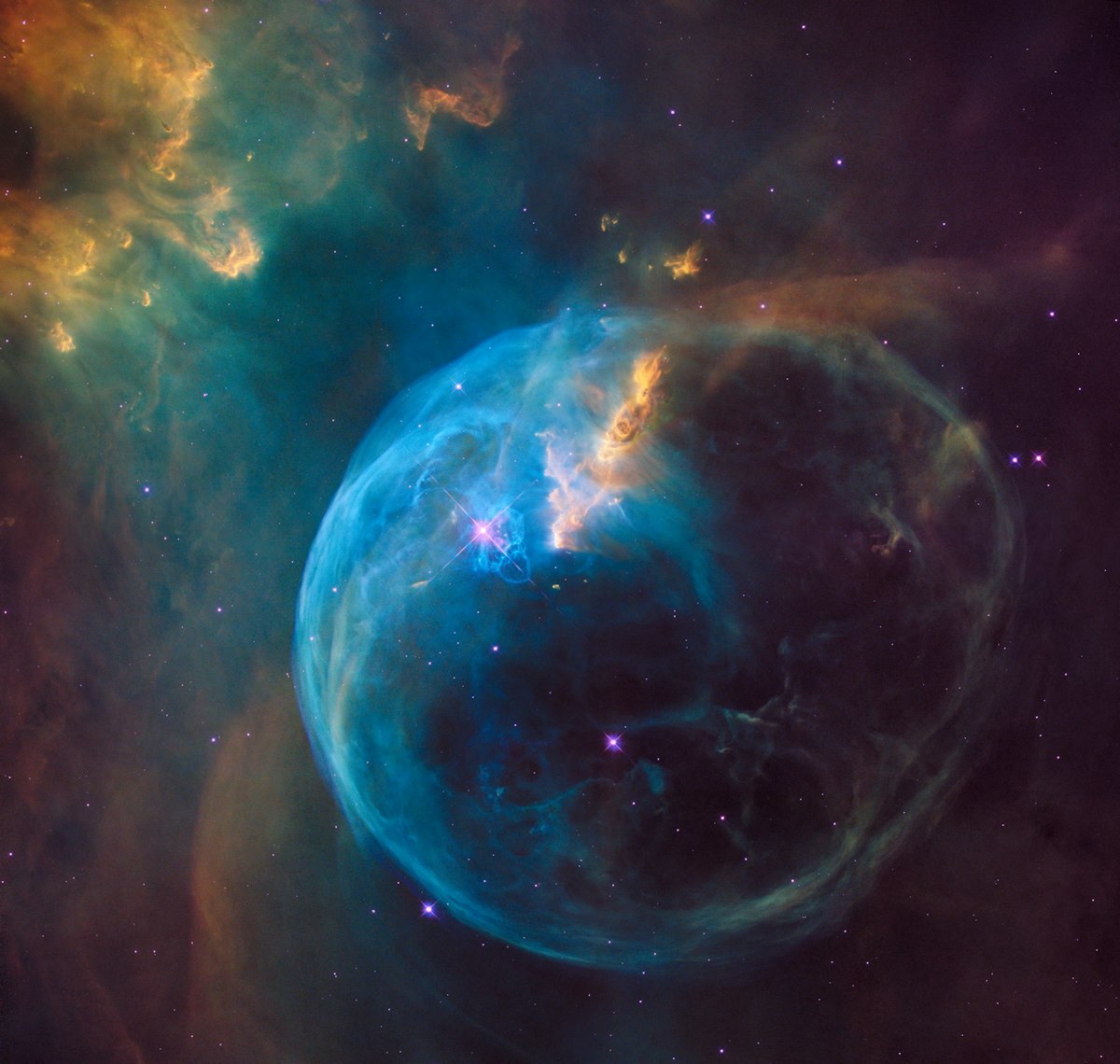The Universe, a great producer of precious metals
The cosmos works as a perfect and enormous recycling system where nothing ends up lost. At the end of its life, the Sun will engulf the Earth; the elements that form it will be part of the next generation of stars.

Materials such as gold, silver, zirconium, cadmium, platinum, or tin, highly valued by humans in jewelry or ingots, are produced in explosions related to neutron stars that throw them into space where they merge with planets in their formation stage, explained Fabio de Colle, a specialist at UNAM's Institute of Nuclear Sciences (ICN).
"The Universe is like a perfect recycling system where nothing ends up lost. When the Earth is eaten by the Sun, what will be left of our atoms will become the next generation of stars," he commented.
Atom is a word of Greek origin, which means "cannot be cut" because it was considered indivisible, but today it is known that it is made up of several parts called electrons, protons, and neutrons. These in turn can be divided into the so-called elementary particles, quarks.
Depending on the amount of these elements, they receive different names such as hydrogen, helium, lead, gold, or magnesium, which is important to know because the human body, that is, we, are made up of atoms such as oxygen (65 percent), hydrogen (9.5 percent) and calcium (1.5 percent), among others, mainly of the so-called light ones.
This implies that the Earth also has these and more, but oxygen predominates, followed by silicon and aluminum. However, when observing the Solar System, the most abundant is hydrogen, followed by helium, which is a thousand times more abundant than oxygen, which is interesting because it is something relatively recent since it was discovered after World War II.
How or from where do these elements arise?
The most accepted answer to date is the Big Bang or a great explosion that occurred 13 billion years ago when a previous universe exploded and at the beginning, there were only elementary particles or quarks that gradually cooled, united, and created protons, neutrons, basic atoms: hydrogen, helium, and lithium... nothing else.
So where do the other elements come from? Here the key lies in the formation of gigantic gas clouds, mainly hydrogen, where there are denser regions that tend to collapse (throughout millions of years) giving rise to stars.
Within them, nuclear reactions are generated that transform hydrogen into helium, release energy and cause them to be hot; that is, it is an enormous furnace that produces helium for billions of years; the Sun has carried out this work for 4.5 billion years and currently has more of this element than hydrogen.
As the sun has to fuse more and more helium, it will increase its temperature, produce carbon and become a red giant. Its size, which is currently about 1 percent of the distance between the Sun and the Earth (astronomical unit or AU), will grow to two AU and our planet will be devoured.
For the Earth, this implies that the temperature will rise, the atmosphere will evaporate and in a short time the materials that form us will melt with the Sun, but this will happen in 4.5 billion years, clarified the specialist in the study of gamma rays and supernovae.
When the work of this enormous nuclear furnace is finished, the star will become a white dwarf and the materials it produced (carbon and oxygen) will fly away, as observed in planetary nebulae.
But the Sun is not the largest, there are stars up to 25 times more massive; that is, they have more mass, are hotter, and can produce heavier elements, such as neon, silicon, and, in fact, they usually create an iron core in their center.
When they can no longer maintain this process, they increase in size and die in the form of supernovae and, as expected of the star, they throw these elements into space, as has been seen in the remains of the Crab nebula known to have exploded in 1054, as recorded by Chinese astronomers.
The heaviest ones are produced in the so-called neutron stars, whose dimension could be even smaller than Mexico City, but being highly dense, a teaspoon of their material is as heavy as an elephant.
The most massive ones live in pairs, which allows their study beyond the different spectra of light. Recently, the LIGO project began to analyze them through gravitational waves that in 2017 was able to capture the merger of two neutron stars or kilonovae, as they are also known, a process in which elements heavier than iron are formed.
"Imagine that in this event that we observed in 2017, more than one Earth mass (the mass that makes up the Earth) of gold was produced, so imagine the amount of heavy elements that are produced in these objects," de Colle noted.




